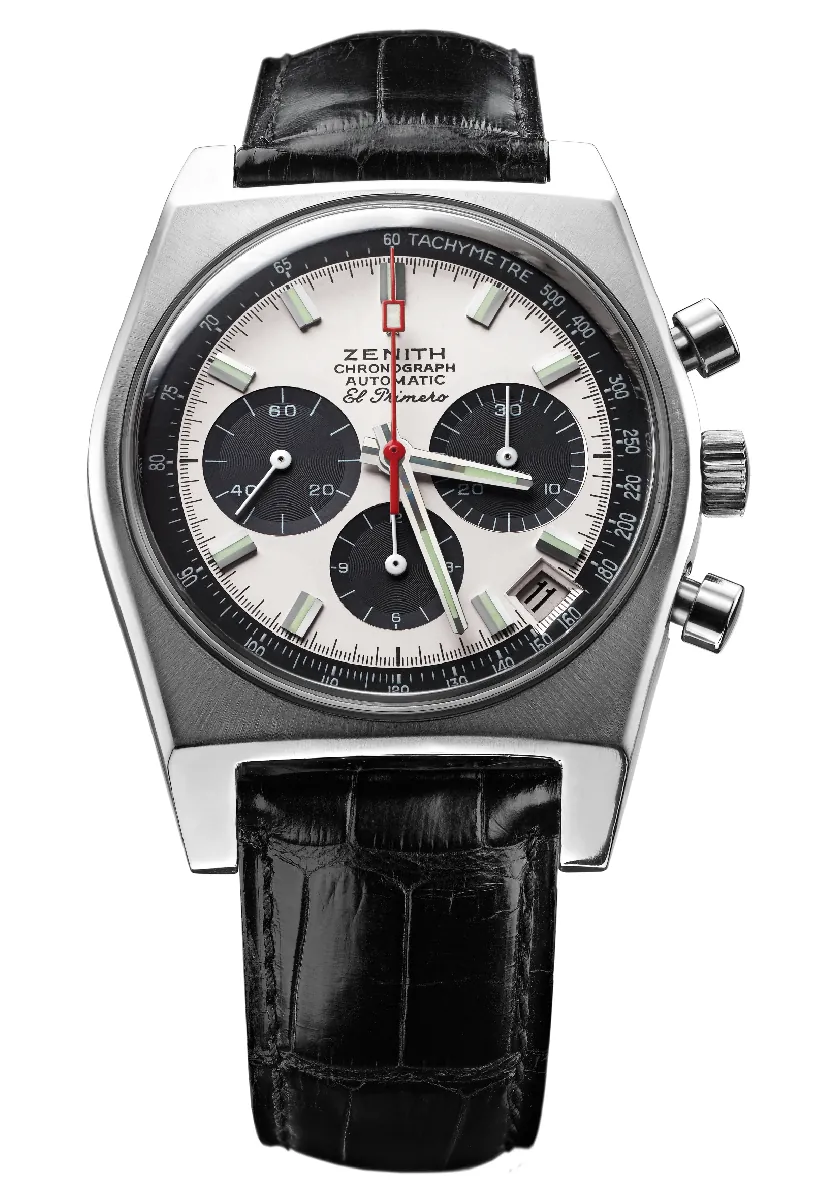Launch Year
1969
Functions
central hours and minutes, small seconds, chronograph, tachymeter scale, date
Movement
high-frequency mechanical chronograph movement with integrated automatic winding
Distinctive features
stainless steel case, crocodile leather strap
A now legendary movement, launched as the quartz crisis rumbled, El Primero owes its name to the context of its birth. Unveiled on January 10th 1969, it made its mark on watchmaking history as the first high-frequency chronograph movement with integrated automatic winding.
Zenith undertook to develop this new calibre in preparation for its centenary in 1965. The technical specifications were clear: Zenith intended this to be the first wrist chronograph calibre with integrated automatic winding, featuring a column wheel and a ball bearing-mounted central rotor, combining a frequency of 36,000 vibrations per hour with an over 50-hour power reserve. It was a daunting challenge and the complexity of the project meant that Zenith was unable to present the movement in time, taking four more years to achieve its objective.
Despite the technical success of El Primero, matched by excellent sales, El Primero was axed as quartz was unleashed on the industry. The Zenith Radio Corporation, owner of the Le Locle-based company since 1971, took the decision to cease all mechanical movement production within the Manufacture. The machines, calibres and tools were to be scrapped and a significant number of partially assembled movements were simply put into storage, along with their technical specifications. Charles Vermot, a watchmaker who had been working for Zenith since the start of his career, undertook to preserve this mechanical heritage. Helped by his brother, he classified, listed and labelled the various cams and cutting tools. He protected the swages and production protocols in a secret place within the Manufacture, thereby saving from oblivion this testimony to the glorious past of high-precision horology.
It was not until 1984 that the El Primero calibre was reborn from its ashes. Ebel was the first to use it in some of its models. Rolex chose it to power its Daytona chronograph. Panerai, Boucheron and Daniel Roth also enlisted its performance, until the LVMH group decided to reserve its qualities for the exclusive use of its own brands.
A paragon of robustness and reliability, the El Primero comes in over 20 variations. Complications such as the tourbillon, large date, split-seconds chronograph, minute repeater, alarm, retrograde date and jumping seconds have all found their place. The El Primero has systematically incorporated the latest technological advances such as Zenithium in 2006 and silicon in 2010. While the precision of the 1969 calibre has been substantially surpassed by the Defy El Primero 21, unveiled in 2017, El Primero remains a legend.
The Chronomaster has been the El Primero’s modern-day incarnation since 2017, with four distinct lines: Revival for watches that are directly inspired by the historic El Primero models; Original that retains the design of the A386 model from 1969; the updated Sport line and Open, with open dials revealing the El Primero’s regulating organ.
Key Characteristics
• First high-frequency chronograph with integrated automatic winding in the history of watchmaking
